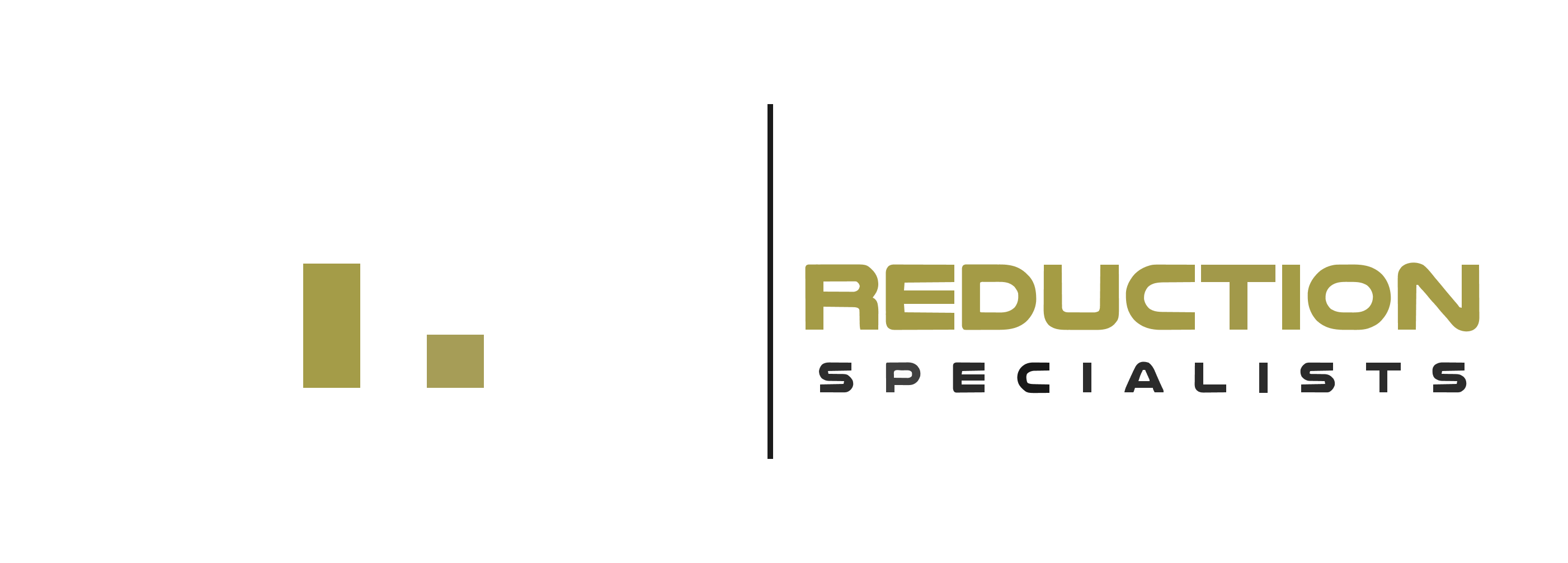Smart Money Moves: 8 Proven Roth Conversion Strategies for Long-term Success
Wondering how to maximize your retirement savings while minimizing your tax burden? A Roth IRA conversion might be your golden ticket to long-term financial success. The key to a successful Roth conversion lies in strategic planning and timing. Whether you’re approaching retirement or already enjoying your golden years, understanding these 8 proven strategies can make a significant difference in your financial future. From managing tax brackets to timing your conversions perfectly, we’ll walk you through expert-tested approaches that have helped countless investors optimize their retirement savings. These strategies aren’t just theoretical – they’re battle-tested methods that can help you: • Minimize your tax liability • Create tax-free retirement income • Eliminate future RMDs • Build a lasting legacy for your heirs Ready to transform your retirement planning? Let’s dive into these game-changing Roth conversion strategies that could reshape your financial future.
Key Takeaways:
- – Roth conversions can provide tax-free income during retirement while eliminating future Required Minimum Distributions (RMDs), offering greater flexibility in retirement planning.
- – Strategic timing of conversions based on your current tax rate and projected future income can significantly minimize your tax liability during the conversion process.
- – Converting traditional IRA funds during years with lower taxable income or after retirement can help optimize your tax situation and maximize long-term benefits.
- – The conversion process requires careful consideration of your specific situation, including current income level, future tax brackets, and overall retirement goals.
- – Working with a financial advisor or tax professional can help ensure your Roth conversion strategy aligns with your investment goals and minimizes tax consequences.
Understanding Roth IRA Conversions
A Roth IRA conversion is a strategic financial move that involves transferring funds from a Traditional IRA to a Roth IRA. This process allows your retirement savings to grow tax-free, though you’ll need to pay taxes on the converted amount in the year of conversion.
How Does a Roth Conversion Work?
When you convert funds, you’re essentially changing how these retirement assets will be taxed. The converted amount gets added to your taxable income for the year. While this means paying taxes sooner rather than later, it can lead to significant long-term benefits.
Key Benefits of Roth Conversions
– Tax-free growth and withdrawals in retirement
– No Required Minimum Distributions (RMDs)
– Greater flexibility in retirement planning
– Potential tax advantages for heirs
Important Considerations
The decision to convert shouldn’t be taken lightly. Consider your current tax bracket versus your expected future tax rate. If you anticipate being in a higher tax bracket during retirement, converting now could be advantageous.
Timing Your Conversion
The best time to convert often depends on various factors:
– Years with lower income
– Market downturns (converting when account values are lower)
– Before reaching RMD age
– When you have funds available to pay the conversion tax
Tax Implications
Remember that Roth conversions trigger immediate tax liability. It’s crucial to have funds outside of your retirement accounts to pay these taxes. Using money from the converted amount to pay taxes reduces the potential benefits of the conversion.
???? Key Takeaway: Roth IRA conversions offer tax-free growth potential and greater retirement flexibility, but require careful consideration of current tax implications and strategic timing to maximize long-term benefits.
Tax Implications and Considerations
Understanding Tax Brackets and Rates
When you convert funds from a traditional IRA to a Roth IRA, the amount converted is added to your taxable income for that year. This means you’ll need to carefully consider your current tax bracket and how the conversion might push you into a higher one. For instance, if you’re currently in the 22% tax bracket and a large conversion bumps you into the 24% bracket, you’ll pay more in taxes than necessary.
It’s crucial to analyze your current tax situation versus your expected future tax rates. If you believe you’ll be in a higher tax bracket during retirement, converting now could be advantageous. However, if you expect to be in a lower bracket later, it might be better to wait.
Timing Your Conversion Strategically
The timing of your Roth conversion can significantly impact its tax efficiency. Many financial experts recommend converting during years when your income is lower, such as early retirement years before Social Security benefits begin. This period, often called the “tax sweet spot,” can help minimize the tax impact of the conversion.
Consider spreading large conversions across multiple years to manage the tax burden. For example, instead of converting $100,000 in one year, you might convert $25,000 annually over four years. This approach helps prevent a sudden spike in taxable income and keeps you in lower tax brackets.
Remember that state taxes also play a role in the overall cost of conversion. Some states offer tax advantages for retirement account distributions, which could affect your conversion strategy. Additionally, be aware that the conversion amount might impact other income-based considerations, such as Medicare premiums or Social Security benefit taxation.
???? Key Takeaway: Strategic timing and careful consideration of current versus future tax brackets are essential for minimizing the tax impact of Roth conversions, with gradual conversions often providing better tax efficiency than single large conversions.
Optimal Timing for Roth Conversions
Early Retirement Years: The Golden Window
The period between retirement and age 72 presents a unique opportunity for Roth conversions. During these years, your income typically drops significantly, placing you in a lower tax bracket. This creates an ideal scenario to convert traditional IRA funds to a Roth IRA while minimizing the tax impact.
Many retirees find themselves in a “tax sweet spot” before Required Minimum Distributions (RMDs) kick in. Without employment income and before Social Security benefits begin, you can strategically fill up lower tax brackets with conversion amounts.
Market Downturns: Converting During Dips
Market corrections can create favorable conditions for Roth conversions. When your traditional IRA balance decreases due to market volatility, you can convert the same number of shares at a lower value, resulting in a smaller tax bill. This strategy allows you to pay taxes on the reduced amount while potentially benefiting from future market recovery in your Roth account.
Consider this approach during significant market dips, but remember to maintain a long-term perspective. The key is to avoid making emotional decisions based on short-term market movements.
Life Changes and Income Fluctuations
Major life changes that temporarily reduce your income can present optimal conversion opportunities. This might include:
– Taking a sabbatical
– Switching careers
– Starting a business
– Experiencing a gap in employment
During these periods of lower income, you can potentially convert larger amounts while staying within lower tax brackets. However, ensure you have sufficient funds outside your retirement accounts to cover the conversion taxes.
???? Key Takeaway: The best times for Roth conversions are during early retirement years before RMDs begin, market downturns, and periods of reduced income when you can minimize the tax impact while maximizing long-term benefits.
Strategic Conversion Methods
Partial Conversion Approach
Converting your entire traditional IRA to a Roth IRA isn’t always the wisest choice. A partial conversion strategy allows you to spread the tax impact over several years while maintaining better control over your tax brackets. By converting smaller portions annually, you can effectively manage your taxable income and potentially avoid jumping into higher tax brackets.
For instance, if you’re in the 22% tax bracket, you might choose to convert just enough to “fill up” that bracket without spilling into the next one. This methodical approach helps optimize your tax situation while steadily building your tax-free retirement savings.
Timing Your Conversions
The timing of your Roth conversions can significantly impact their effectiveness. Early retirement years, particularly before Required Minimum Distributions (RMDs) kick in at age 73, often present ideal opportunities for conversions. During these years, your income might be lower, placing you in a more favorable tax bracket.
Market downturns can also create strategic conversion opportunities. When your traditional IRA balance is temporarily depressed due to market conditions, converting those assets means paying taxes on a lower amount while potentially benefiting from future market recovery in your Roth account.
Consider implementing conversions during years when:
– Your income is lower than usual
– You have tax deductions that can offset conversion income
– Market values are temporarily down
– You’re between retirement and RMD age
– You haven’t yet started collecting Social Security benefits
Remember to coordinate your conversion timing with other income sources and tax events to maximize the strategy’s effectiveness. This might mean avoiding conversions in years with large capital gains or when receiving significant bonuses.
???? Key Takeaway: Strategic Roth conversions work best when implemented gradually through partial conversions and timed during optimal tax and market conditions to minimize immediate tax impact while maximizing long-term benefits.
Social Security and RMD Considerations
Timing your Roth conversion requires careful consideration of Social Security benefits and Required Minimum Distributions (RMDs). These two factors can significantly impact your tax situation and the overall effectiveness of your conversion strategy.
Impact on Social Security Benefits
Converting to a Roth IRA can temporarily increase your income, potentially making more of your Social Security benefits taxable. Up to 85% of your benefits could become taxable if your combined income exceeds certain thresholds. Planning your conversions before you start collecting Social Security can help minimize this tax impact.
Strategic Timing with RMDs
Traditional IRAs require you to take RMDs starting at age 73, which can push you into higher tax brackets. Converting before RMDs kick in gives you more control over your tax situation. Plus, Roth IRAs don’t have RMDs for the original owner, offering greater flexibility in retirement spending.
The Sweet Spot Window
The years between retirement and age 72 often present an ideal opportunity for Roth conversions. During this period, your income might be lower, and you’re not yet required to take RMDs. This “sweet spot” can help you execute conversions at potentially lower tax rates.
Tax-Bracket Management
Consider spreading conversions across multiple years to stay within desired tax brackets. This approach helps balance the immediate tax cost while maximizing the long-term benefits of tax-free Roth distributions. Remember to factor in other income sources when planning your conversion schedule.
???? Key Takeaway: Strategic timing of Roth conversions between retirement and RMD age, while considering Social Security benefits, can optimize your tax situation and enhance long-term retirement planning outcomes.
Long-term Benefits and Advantages
Tax-Free Growth Potential
Converting to a Roth IRA opens up opportunities for substantial tax-free growth over time. Unlike traditional IRAs, where you’ll owe taxes on withdrawals, your Roth investments can compound without future tax obligations. This becomes particularly valuable if you expect your investments to appreciate significantly.
Estate Planning Benefits
Roth conversions offer remarkable advantages for legacy planning. Your beneficiaries can inherit your Roth IRA tax-free, making it an efficient wealth transfer tool. While they must take distributions within 10 years under the SECURE Act, these distributions remain tax-free, preserving more of your hard-earned wealth for future generations.
No Required Minimum Distributions
One of the most appealing aspects of Roth IRAs is the absence of Required Minimum Distributions (RMDs) for the original account owner. This flexibility allows your money to grow tax-free for as long as you choose, providing greater control over your retirement income strategy.
Tax Diversification
Having both traditional and Roth accounts creates valuable tax diversification in retirement. This flexibility enables you to strategically withdraw from different accounts based on your tax situation each year, potentially helping you maintain a lower tax bracket and optimize your Social Security benefits.
???? Key Takeaway: Roth conversions provide lasting benefits through tax-free growth, estate planning advantages, freedom from RMDs, and strategic tax diversification, making them a powerful tool for long-term financial success.
Risk Management and Professional Guidance
Understanding Conversion Risks
Converting to a Roth IRA involves careful consideration of various risks that could impact your financial future. Market volatility during the conversion period can significantly affect your tax liability, as the amount you convert is taxed based on its value at the time of conversion.
Mitigating Risk Through Professional Guidance
Working with qualified financial advisors and tax professionals is crucial for navigating the complexities of Roth conversions. These experts can help analyze your specific situation, considering factors like current income, future tax projections, and retirement goals to develop a tailored conversion strategy.
Strategic Risk Management Approaches
Breaking up conversions into smaller amounts over multiple years can help minimize tax impact and market timing risks. This dollar-cost averaging approach provides flexibility to adjust your strategy based on changing market conditions or personal circumstances.
Consider implementing a systematic conversion plan that aligns with your broader retirement strategy. This might include converting during market downturns when account values are lower, potentially reducing your tax burden.
The Role of Regular Review
Regular monitoring and adjustment of your conversion strategy is essential. Market conditions, tax laws, and personal circumstances can change, requiring modifications to your approach. Professional advisors can help you stay on track and make informed decisions about when to proceed with or pause conversions.
???? Key Takeaway: Successful Roth conversions require careful risk management and professional guidance to navigate market volatility, tax implications, and changing personal circumstances while maintaining long-term financial goals.
Advanced Conversion Techniques
Strategic Partial Conversions
Implementing partial conversions over multiple years can help manage tax implications while maximizing long-term benefits. By converting smaller portions of your traditional IRA annually, you can stay within lower tax brackets and maintain better control over your tax liability.
Backdoor Roth Conversion
For high-income earners who exceed Roth IRA contribution limits, the backdoor conversion offers a sophisticated workaround. This involves making non-deductible contributions to a traditional IRA and then converting them to a Roth IRA shortly after. However, be mindful of the pro-rata rule, which considers all your IRA assets when calculating taxes.
Mega Backdoor Strategy
This advanced technique allows you to contribute up to $40,500 (as of 2023) to your Roth IRA through after-tax 401(k) contributions. The strategy works best if your employer plan permits both after-tax contributions and in-service distributions. First, max out your after-tax 401(k), then roll these funds into a Roth IRA.
???? Key Takeaway: Advanced Roth conversion techniques like partial conversions, backdoor strategies, and mega backdoor methods offer sophisticated ways to optimize retirement savings while managing tax implications effectively.
Conclusion
As you embark on your Roth conversion journey, remember that these eight proven strategies serve as your roadmap to a more secure retirement future. By carefully timing your conversions, managing tax brackets, and implementing these expert-tested approaches, you can significantly optimize your retirement savings while minimizing tax implications. The key to success lies in thoughtful planning and execution. Whether you choose to convert during low-income years, leverage market downturns, or implement a systematic conversion strategy, each approach can be tailored to your specific financial situation. Remember to consult with a qualified tax professional or financial advisor to ensure your chosen strategy aligns with your retirement goals and current tax situation. Take the first step today by reviewing your retirement accounts and assessing which Roth conversion strategy best suits your needs. Your future self will thank you for making these smart money moves that can lead to tax-free income and greater financial flexibility in retirement. The path to a more secure retirement starts with action – begin your Roth conversion planning now.
FAQs
What happens if I make a mistake during a Roth conversion?
If you make a mistake during a Roth conversion, you have a limited time window called recharacterization to undo it. However, the Tax Cuts and Jobs Act of 2017 eliminated the ability to recharacterize Roth conversions. It’s crucial to carefully plan and consult with a tax professional before proceeding.
Can I do multiple Roth conversions in the same year?
Yes, you can perform multiple Roth conversions within the same tax year. There’s no limit to the number of conversions you can do. However, each conversion will be taxed at your ordinary income tax rate, so it’s important to strategically plan these conversions to manage your tax liability.
How does a Roth conversion affect my Medicare premiums?
A Roth conversion can temporarily increase your modified adjusted gross income (MAGI), which might result in higher Medicare premiums through IRMAA (Income-Related Monthly Adjustment Amount) surcharges. These increases typically affect premiums two years after the conversion year.
Can I still contribute to my Traditional IRA after doing a Roth conversion?
Yes, you can continue contributing to your Traditional IRA after completing a Roth conversion. The conversion doesn’t affect your eligibility to make future contributions to either account type, as long as you meet the basic income and age requirements for contributions.
How do state taxes impact Roth conversion decisions?
State taxes can significantly impact the total cost of a Roth conversion. Different states have varying tax treatments for retirement account distributions and conversions. Some states don’t tax retirement income at all, while others might have higher rates than federal taxes.
What’s the impact of a Roth conversion on college financial aid?
A Roth conversion can affect college financial aid eligibility because it increases your adjusted gross income in the conversion year. This higher income might reduce need-based financial aid opportunities for the following academic year, so timing is crucial if college expenses are a concern.



![10 Smart Income Deferral Strategies to Reduce Your Tax Burden [Expert Tips]](https://taxreductionspecialists.com/wp-content/uploads/2024/11/tax-burden-768x604.jpg)



